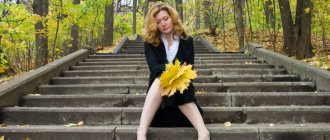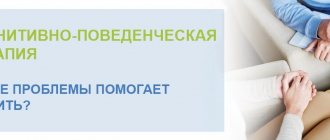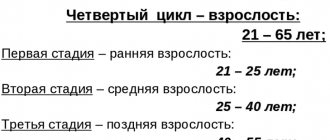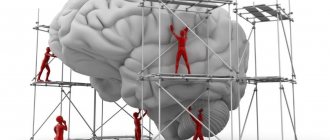Various allergic reactions in our age are not at all a rare occurrence. Moreover, they occur with the same frequency in both adults and children.
Desensitizing drugs (antiallergic and antihistamine) are drugs that are widely used in the treatment of allergic manifestations. The mechanism of action of such drugs is determined by blocking H1-histamine receptors. This means that the drug suppresses the effects of histamine, which is a mediator substance that contributes to the occurrence of most allergic manifestations. This article will provide a detailed list of desensitizing drugs.
Histamine was first identified in animals at the beginning of the 20th century, and by the mid-thirties of the 20th century, scientists had invented the first drugs that inhibited the effects of such a substance. Repeated studies confirm the fact that histamines act on histamine receptors in the skin, respiratory system and eyes, which is responsible for the occurrence of typical allergic symptoms. It is precisely this reaction that antihistamines can suppress.
Desensitizing drugs are classified according to the mechanism of their effect on various types of allergies:
- Remedies that affect allergies immediately.
- Drugs that have a slow effect on allergies.
Immediate antiallergic agents
This category can also be classified into:
- Drugs that inhibit the release of allergic mediators from basophilic and smooth muscle cells. In this case, the cytotoxic cascade characteristic of an allergic reaction slows down. These include glucocorticoids and β1-adrenomimetic agents, as well as those having an antispasmodic myotropic effect.
- Drugs that stabilize cell membranes.
- Drugs that block H1-histamine cellular receptors.
- Desensitizing drugs.
- Drugs that are inhibitors of the complementary system.
What other desensitizing drugs are there?
What are the side effects of allergy vaccination?
The ASIT technique is used in the treatment of millions of patients of different ages. Provided that the optimal dose is correctly calculated and the procedure is carried out correctly, the treatment is tolerated quite well. However, no one is immune from side effects.
When it comes to subcutaneous injection of allergens, many patients experience symptoms such as redness, slight swelling and itching at the injection site. This is a temporary reaction that goes away in 1–3 days. When the drug is absorbed under the tongue, similar symptoms (burning, itching, swelling of the mouth) can sometimes occur, but they occur much less frequently.
In addition to local side effects, some patients complain of more serious systemic manifestations: headache, nasal congestion, urticaria, swelling (Quincke's edema). In most cases, such a reaction indicates improper treatment.
The response usually manifests itself within 30–60 minutes, so this time must be spent in a clinic (hospital), where professional assistance can be provided in a timely manner.
Pathogenesis of allergic reaction
In the pathogenetic formation of an allergic reaction, a decisive role is played by histamine, which is synthesized from histidine and deposited in basophils (so-called mast cells) present in the connective tissue of the body (not excluding blood), as well as in eosinophils, platelets, biofluids, and lymphocytes. In cells, histamine is present in the inactive phase and is associated with polysaccharides and proteins. Its release occurs as a result of a mechanical defect in the cell, an immune reaction, or exposure to drugs or chemicals. Its inactivation is possible through histaminase from mucosal tissues. Histamine activates H1 receptors, and as a result, membrane phospholipids are excited. Due to chemical reactions, conditions arise that allow calcium to enter the cell. It is he who influences the contraction reactions of smooth muscles. Desensitizing agents are aimed at suppressing the effects of histamine.
This substance, acting on H2-histamine receptors, activates adenylate cyclase and also increases the production of cAMP in cells. As a result, gastric secretion increases. Accordingly, some of the desensitizing agents can be used to reduce the secretion of HCI.
Histamine causes dilation of capillaries, increases the permeability of vascular walls, provokes edema and reduces plasma volume. In combination, such disorders lead to thickening of the blood and a decrease in blood pressure, the smooth muscle layer of the bronchi contracts, the release of adrenaline increases, and the heart rate increases.
As a result of this effect on the H1 receptors of the endothelium of the capillary walls, prostacyclin is released, which contributes to the process of expanding the lumen of venules and small vessels. Blood is deposited in them, and the volume of circulating fluid decreases. As a result, plasma, proteins and blood cells are released through the dilated interendothelial wall spaces.
From the mid-twentieth century to the present day, desensitizing drugs have been constantly changing. Scientists have been able to synthesize new drugs that have fewer side effects and are more effective. At the moment, experts distinguish three main groups of anti-allergy drugs: from the first to the third generation.
How is ASIT performed?
Preparation
The decision on the advisability of specific immunotherapy is made jointly by the patient and the doctor. Before starting treatment, a person suffering from allergies will have to undergo training, which involves conducting research - their results are necessary to draw up an individual treatment regimen.
Mandatory examinations include blood and urine tests, as well as allergy tests. Additionally, the doctor may order an electrocardiogram and spirography (the list of necessary examinations depends on the characteristics of the disease and the patient’s condition).
A week before the procedure, the patient should stop taking antihistamines. During the treatment course, it is important to create such conditions to avoid contact with the provoking allergen (or at least reduce it to a minimum).
Options
Allergen immunotherapy can be performed on an outpatient or inpatient basis. In the first case, one treatment course lasts up to six months (such courses are repeated for several years in a row). If the patient is in a hospital, vaccination is carried out for 3–4 weeks, after which another 2–3 months of procedures are carried out on an outpatient basis.
Scheme
There are several schemes of hyposensitizing therapy. The best option is the classic scheme, which is suitable for various forms of allergies - both at an early stage and with a long-term illness. As an alternative, the patient may be offered a shortened version that takes less time. Accelerated courses carry more risks, so they can only be carried out in mild forms and in a hospital setting, under constant medical supervision.
Without exception, all schemes consist of two stages:
- At the first stage, the introduction of minimal doses of allergens begins with their gradual increase to the maximum permissible dose (this is the so-called optimal dose, the maximum tolerated volume of the allergen). In the classic version, this stage, called the initiating stage, usually lasts 4 months.
- The second stage is the maintenance stage (according to the classical scheme, it lasts from 6 months to several years). All this time, the patient receives an optimal dose of purified allergen - this allows the achieved effect to be consolidated.
Methods of administration
To deliver the allergen into the body, ASIT therapy provides injection and non-injection methods of administration:
- Using subcutaneous injections (shots);
- orally (in the form of tablets, drops, capsules);
- sublingual (absorption under the tongue);
- intranasally (instillation into the nose).
The most convenient and safest method is sublingual administration, which can be used in both adult patients and children.
Subcutaneous injection
ASIT treatment - drugs
The patient may be offered different forms of drugs. Initially, therapy using this method involved the use of water-salt extracts (for example, a water-salt preparation of birch pollen).
Later, in addition to natural allergens found in nature, modified polymerized analogs appeared - allergoids for injection and resorption.
In the arsenal of domestic allergists there are drugs of Russian and imported origin (medicinal allergens Stallerzhen, Alustal, Oralair, Staloral, etc. have proven themselves well).
Therapy
The most effective and safest are depot preparations (long-acting allergy vaccines). Their peculiarity is that the release of the allergen occurs directly in the body (this reduces the risk of side effects), and the effect of the drug lasts for a longer time, due to which fewer procedures are needed.
First generation of children's products
This generation of drugs includes:
- "Fenistil" - it is recommended for children older than one month. Prescribed in the form of drops.
- "Suprastin" - for children over one year old. If the child is under one year old, the medicine is prescribed by injection and only under the close supervision of a pediatrician.
- Diphenhydramine can be used for children over seven months of age.
- "Fenkarol" - for children over three years old.
- "Clemastine" can be used to treat children who have reached the age of six years.
- "Diazolin" - only older than two years.
- "Tavegil" - for children over six years old.
Desensitizing treatment should only be prescribed by a pediatrician.
Who is it suitable for and how does ASIT work?
ASIT is used in cases where allergens are substances that cannot be avoided (for example, pollen). This method is used if an IgE-dependent allergic disease is diagnosed.
The technique helps with:
- allergic rhinitis and/or rhinoconjunctivitis;
- insect allergies (reaction to dust mites, allergy to insect bites);
- hay fever (seasonal rhinitis);
- atopic bronchial asthma.
Seasonal allergies
The key participants in the body's allergic reaction are antibodies and immunoglobulins lgE. Upon contact with an allergen, immunoglobulins cause an increased reaction, which manifests itself in the form of unpleasant symptoms (nasal congestion, sneezing, coughing, rash, etc.). Allergy vaccination (ASIT) allows you to rebuild the immune system: such treatment is designed to normalize the level of specific E-immunoglobulins.
Second generation of children's products
The most common drugs of this generation include:
- Claritin is prescribed to children over two years of age.
- Zyrtec is prescribed in the form of drops for children over six months old, and in tablets for those over six years old.
- “Erius” is prescribed by the attending physician in the form of syrup for children over one year of age and in tablets for those over twelve years of age.
What are the contraindications?
This treatment method is not universal: it has both limitations and contraindications.
| ASIT is not performed | Allergies that are not treated with ASIT |
|
|
Reviews
Few people know that antihistamines and antiallergic drugs are called desensitizing drugs. But reviews about them are mostly positive. Consumers prefer the latest generation of medicines, considering them more effective. They practically do not cause drowsiness or other side effects.
It should be remembered that before you start taking such desensitizing drugs, you must consult a specialist and carefully study the attached instructions for use. This will avoid possible side effects.
How do you know that ASIT therapy is helping?
Proof that immunotherapy gives a positive result is the weakening of allergic symptoms after the next course, as well as an improvement in the patient’s general well-being. People undergoing such treatment note that the manifestations of allergies gradually decrease, and the need for taking antiallergic drugs decreases (including in the period between courses). Laboratory tests, in particular, a blood test for immunoglobulin E (the IgE level in the blood serum decreases after treatment), can objectively assess the effectiveness of therapy.
To ensure maximum effectiveness of therapy, it is important:
- start treatment as early as possible, if possible in the early stages of allergy;
- use quality vaccines;
- follow all recommendations of the attending physician.
P. Desensitizing drugs
Eradication therapy
A. Histamine H1 receptor blockers:
astemizole (gismanal, astelong, stealert)
- 1 table. (0.01g) 1 time/day, overdose is not permissible, has no hypnotic effect;
tavegil (clemastine)
- 1 table. (0.001g) 2 times/day; in severe cases - up to 6 tablets. per day, drowsiness is possible;
pheniramine
- 1 table. (0.025 g) 2-3 times/day, drowsiness is possible;
cetirizine (Zyrtec)
- 1 table. (0.01 g) 1 time/day. during dinner, has no hypnotic effect;
Loratadine (Claritin)
- 1 table. (0.01 g); does not have a hypnotic effect.
B. Glucocorticoids (for a long-term chronic process, when the disease does not respond to conventional treatment):
betamethasone (celeston)
- table 0.5 mg each; initial dose - 1.0-2.5 mg (2-5 tablets), within 3 days reduce the dose to a maintenance dose of 0.25-0.5 mg 1/2 -1 tablet) within 7-10 days from the start treatment;
triamcinolone (kenalog, bermekort, delficort, polcor-tolon)
— 4 mg orally, prescribed according to the same regimen; does not increase blood pressure, does not retain salt and water in the body.
III. Anti-inflammatory drugs
:
diclofenac (voltaren, diclac, ortofen, revodina)
- take 1 tablet in the morning. (50 mg) and at night 1 rect. suppository (100 mg); daily dose - 150 mg, for severe pain - 75 mg once, intramuscularly, deep into the buttock;
piroxicam (pirokam, pixikam, roxicam, tellin, ho-temin, erazon)
— prescribe 1 tablet in the morning. (0.02 g) and at night 1 rectal suppository (0.02 g): for pain symptoms, an intramuscular injection of 0.04 g is acceptable: it has a rapid analgesic effect (after 30 minutes);
naproxen (doprox, naprobens, naprosyn, pronaxen)
- in the morning 1 tablet. (0.5 g) and at night 1 rect. candle (0.5 g); daily dose no more than 1.75 g;
nimesulide
- 100 mg 2 times a day, after meals.
112 Practical gynecology
IV. Vitamins:
vitamin B 1 (thiamine 6% solution) and vitamin B 6 (pyridoxine 5% solution) -
Prescribe 1 ml intramuscularly, in turn, 10 injections of each vitamin;
retinol acetate (vitamin A) -
3300 ME tablets or 5000 ME capsules, 1-2 tablets or 1 capsule 10-15 minutes after meals;
ascorbic acid (vitamin C) -
orally 0.05-0.1 g, 3-5 times/day, administered parenterally in the form of a solution of sodium salt (sodium ascorbate) 1-3 ml of a 5% solution;
tocopheryl acetate (vitamin E) -
orally 0.05-0.1 g, 1-2 times/day. Courses for 1-2-3 weeks.
Multivitamin preparations are used in doses recommended by the manufacturer (Unicap-T, Triovit, Vitrum, Multitabs).
V. Immunomodulators (Appendix 3).
VI. Enzymes and other absorbable agents:
Decongestant, anti-inflammatory, secondary anal-
gesic and immunomodulatory effects, increase the production of alpha-interferon by leukocytes, and have a resolving effect.
Wobenzym
(contains trypsin, chymotrypsin, lipase, amylase, papain, bromelain, vitamin P). Take 5 tablets. 3 times/day. 40 minutes before meals (drink 200 ml of water), for 14-28 days;
serta (serratiopeptidase) -
5 (10) mg, 3 times/day. after eating, without chewing. The course of treatment is from 2 to 4 weeks;
crystalline trypsin -
10 mg of the drug 1 time/day. IM for 5 days;
terrilitine
(vaginal or rectal suppositories) - 600-1000 units 2-3 times a day, 5 days;
lidase
(lyophilized powder) - for subcutaneous and intramuscular use, 64 UE daily or every other day, course of treatment is 10-15 or more injections;
magnesium sulfate -
5 ml of 25% solution IM.
VII. Biogenic stimulants.
This is a group of substances formed under certain conditions in isolated tissues
Chapter 2. Inflammatory diseases of the female genital organs
113
of animal and plant origin and capable of having a stimulating effect and accelerating regeneration processes when introduced into the body.
1. Biostimulants of animal origin:
polybiolin
(made from placental blood) - 0.5 g of dry matter, diluted with novocaine, administered intramuscularly daily for 10 days;
The essence of the method
So what is desensitization? This is Wolpe's way of dealing with fear. It is considered one of the most popular methods of behavioral psychotherapy. Its essence looks like this: during the action of fear-generating stimuli, you can develop opposite emotions, which over time neutralize this fear.
Wolpe's psychological technique triggers counterconditioning, or a mechanism in which positive stimuli eliminate negative ones. In the experiment with cats, this was feeding. In the case of a person, any method of relaxation or relaxation can be used.
If, during deep relaxation, negative stimuli are evoked in a person in a relaxed state, desensitization will begin. Fears and anxieties will be absorbed by positive emotions.
Joseph Wolpe identified many emotions that are the opposite of fear. He also named a number of ways to use his desensitization method. In practice, the scientist most often used a muscular reaction.
Stages
The desensitization method in psychology takes place in 3 stages:
- First, a person is taught to enter a state of relaxation, to relax. This is possible thanks to autogenic training, suggestion, and hypnosis. In the case of children, special play exercises are also used.
- Next, a hierarchy of stimuli is built that provoke the development of fear. There are 2 such hierarchies: thematic and spatiotemporal. In the first case, the stimuli differ in physical properties and objective meanings. In the second, there is only one incentive. But it has different levels of anxiety.
- The last stage is the actual fight against fear.
At the end, using the constructed hierarchy, the psychologist presents alarming stimuli. The process is repeated until the person remains in a relaxed state when presented with even the most powerful stimuli.
Working with adults and adolescents using the desensitization method, specialists describe the situation, and patients recreate it in their imagination. This approach has one small drawback: the anxiety is less than the impact of the same stimuli in real life.
Work with children
Desensitization in the case of children deserves special attention. It is sometimes difficult for a child to recreate the situation described by a psychologist in his imagination. Therefore, everything is displayed clearly.
Desensitization for children helps them associate themselves with their favorite character and become a full participant in the situation that he is playing out. At the same time, the specialist guides him so that the baby is constantly faced with what causes fear in him.
Working with young patients also takes place in several stages:
- drawing up a hierarchy;
- definition of favorite character;
- a role-playing game that is similar to the problem.
The last stage, as in the case of adults, will be desensitization.
The essence of the method
Volpe himself characterized his method as “the gradual elimination of neurotic habits of fear,” i.e. a gradual decrease in emotional sensitivity to certain objects or situations. By neurosis, Wolpe understands conditioned (i.e. learned) fear, which becomes the cause of most forms of maladaptive behavior. If it is possible to find ways to reduce or completely extinguish neurotic fear, then getting rid of it also leads to the elimination of its usual behavioral manifestations, i.e. to cure. Volpe does not make any distinction between fear and anxiety, since from a psychophysiological point of view they are identical.
The method of systematic desensitization involves the emergence of a counterconditioning mechanism, during which a non-fear-inducing stimulus extinguishes the previous reflex. In experiments on animals, such a counterconditioning stimulus is feeding, but in humans, one of the effective stimuli opposite to fear is relaxation. Therefore, if you teach the patient deep relaxation and in this state encourage him to conjure up stimuli that cause first a smaller and then an increasingly greater degree of anxiety, the patient will be desensitized to real stimuli or situations that cause fear. Thus, fear and anxiety can be suppressed by combining stimuli that cause fear and stimuli that are antagonistic to it. To explain the concept of reconditioning, Wolpe introduced a more general concept: “mutual inhibition,” a term first used by Sherrington to describe spinal cord responses. Wolpe extended it to higher neurophysiological processes, that is, situations in which the appearance of a certain reaction possibly causes a weakening of a simultaneous reaction. He assumed that if after the opposite reaction the drive decreases, then the previous reaction should undergo conditioned inhibition. Wolpe described a number of opposing reactions to fear and developed several techniques related to the principle of mutual inhibition. Of the many behavioral responses considered to be the opposite of fear, the muscular response is the most commonly used in therapy. It is the basis of “systematic desensitization” of symptoms associated with fear.
Sensitization to alcohol
Alcohol is quickly absorbed and spreads throughout all organs, causing disruptions in their functioning. Alcohol is especially dangerous for the nervous system and brain. Soon after consumption, a person’s coordination is impaired, speech incoherence and other signs typical of a drunken state appear. A person who begins to drink alcohol in order to gain pleasure and achieve a certain intoxicated state, as a rule, will not give up alcohol of his own free will.
It is for such people that the method of forcibly cleansing the body of alcohol toxins and temporary relief from addiction is effective. This technique is sensitization to alcohol. Practice shows that this method of getting rid of addiction (even if temporary) is effective even for the most hardened alcoholics.
Sensitization to alcohol involves the use of certain medications, under the influence of which a stable aversion to alcohol is formed in the body. Only before using these drugs is it necessary to abstain from drinking alcohol for at least three days. The mechanism of action of sensitizing therapy is quite simple.
- after the required 3-day period of sobriety, a small capsule filled with a special long-term medication is injected under the skin layer of the patient;
- the drug does not harm the patient in any way until he drinks alcohol. Then sensitization will manifest itself in a rather pronounced form;
- the patient may not drink alcohol at all, but only inhale its vapor, which will also cause a corresponding reaction. The condition will not improve until the patient is in the fresh air;
- if the patient consumes even a small amount of a low-alcohol drink, the body will react with lightning speed to this death until the alcohol is completely removed.
Before undergoing sensitization of the body to alcohol, the patient must be warned about the consequences of drinking alcohol in the future, which is confirmed by his receipt justifying the actions of the specialists.
Three stages of desensitization according to Wolpe
Inhibition of fear reactions occurs in three stages:
- compiling a list of frightening situations/stimuli indicating their hierarchy;
- teaching any method of muscle relaxation to create a physical state opposite to the state of the emotion of fear;
- desensitization training itself: gradual presentation of a frightening stimulus or situation in combination with the use of a muscle relaxation method with an increase in the degree of anxiety of situations from the list.
During preliminary sessions, muscle relaxation training is carried out, usually using the abbreviated Jacobson technique, which consists of tensing and relaxing individual muscle groups and performing exercises to recognize sensations associated with states of muscle tension and relaxation. Typically, the patient is asked to practice relaxation at home between sessions. There are differences in the methods that induce relaxation. Some use hypnotic suggestion or a form of autogenic training.
At the last stage, the patient’s faith in the psychotherapist and the feeling of security experienced in his presence play an important role, since the latter are counter-conditioning factors that increase motivation to confront stimuli that cause fear. Therefore, the technique turns out to be more effective if there is good contact between the psychotherapist and the patient, and the final result of desensitization is directly dependent on the quality of relaxation. Wolpe himself did not simply use the technique of reciprocal inhibition in his therapy; his relationship with the patient was always friendly and empathic; he carefully studied the patient's life history; he gave interpretations; he used suggestion and persuasion, telling the patient that if he went through a series of relaxations, he would begin to feel better. Thus, integral components of his psychotherapeutic sessions were: cognitive training, corrective emotional experiences, the empathic nature of the relationship between patient and therapist, modeling and repetition.
For simple phobias, 4-5 sessions are usually carried out, in complex cases - up to 12 or more. In the case of multiple phobias, desensitization is carried out in turn, in relation to each phobia. It is not recommended that desensitization sessions exceed 30 minutes.
History of origin
UHF therapy, what is it?
The method of systematic desensitization was developed by the South African therapist Joseph Wolpe based on the experiments of I. P. Pavlov on classical conditioning. The psychologist started from the assumption that with a phobia, generalization of affect occurs, and the emotional experience of fear is associated with the initially neutral signs of those situations in which the emergence of fear occurred. Because of this, the psychotherapeutic goal is formulated - to achieve extinction of the conditioned reflex, which is the experience of fear to objectively neutral stimuli, by associating these stimuli with pleasant reinforcement.
During the Second World War, J. Wolpe was a medical officer in the South African Army. He served in a military psychiatric hospital, where some patients suffered from the so-called “war neurosis”, known today as post-traumatic stress disorder. Dr. Volpe and his colleagues have tried drug therapy to help patients cope with traumatic memories of battle, but the results have been generally unsatisfactory. It was these failures that prompted Wolpe to search for new treatments for anxiety disorders. In the post-war years, Volpe studied a model of anxiety neurosis in cats. The experimental animal was exposed to electric current in combination with strong light and sound stimuli until the animal developed a persistent panic reaction to just approaching the cage. Once a phobia was established, the effectiveness of various treatments could be investigated. It turned out that the most reliable way to get rid of a phobia was the gradual and systematic presentation of fear-inducing stimuli while feeding the animals. At first, the cat with a phobia was fed in the room where the cage was located, at a certain distance from the latter. Then the bowl of food was placed a little closer to the cage, then even closer, then inside the cage... In the end, the animal was “retrained” and could feel completely calm in the very cage that had recently caused panic. Thus, the principle of reciprocal inhibition became the basis for therapeutic measures. Gradually, the cats lost all sensitivity to electric shocks, which had previously caused them obvious anxiety. Wolpe then proposed that anxiety and uncertainty could be treated by replacing fear in a social situation with another incompatible with the fear, emotion, or replacement behavior. The psychotherapist has proven that “if an anxiety-inhibiting response can be produced in the presence of anxiety-provoking stimuli, it will weaken the connection between these stimuli and the anxiety response.” In other words, fear can be eliminated if it is replaced by a state opposite to fear. As a result of his research, Dr. Volpe then came to the conclusion that for adults, the best way to create a state opposite to fear and tension is Jacobson's neuromuscular relaxation.









